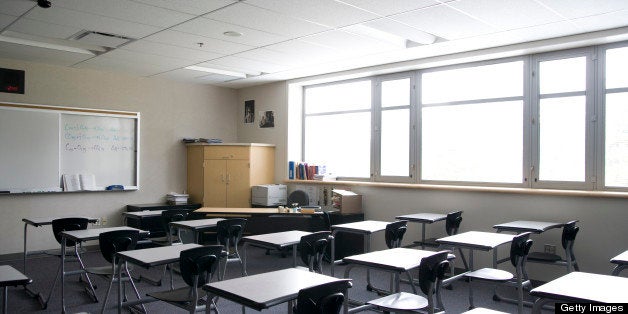
As the saying goes, the best predictor of future behavior is past behavior. Unfortunately, that saying does not bode well for the thousands of children who will be displaced when 54 schools shut down this year.
It's also a bad omen for communities. The last thing Englewood, Austin or any of the neighborhoods -- most of them poor and black -- that stand to lose schools need is another boarded-up vacant building. (CPS says it is "working with community and city departments on a comprehensive planning process to determine the best use for unused buildings.")
With CPS losing enrollment, officials insist that the closings are needed to "right-size" the district, to save money and to provide more resources in schools that will stay open.
But many long-time observers and community activists aren't buying that. They hope for the best, but see no evidence that mass closings, the largest ever in a major urban district, will bring anything but more chaos and turmoil to communities that already struggle with social and economic woes. Our chart in the latest issue of Catalyst In Depth gives readers some hard statistics on the challenges faced by the 54 schools and their neighborhoods.
As we report in our latest issue, members of the Chicago Educational Facilities Task Force, which was created by lawmakers, are already sounding the alarm about children "falling through the cracks."
That fear is based in part on what happened last year, when CPS shut down four small elementary schools and displaced 467 students. CPS now cannot account for the whereabouts of 51 of those children, slightly more than one in 10 students. Yes, that's a small number. But as task force members point out, what about the multiplier effect with 54 closings instead of four? If CPS can't adequately track 467 children, why believe they can track thousands?
Critics also are skeptical of the promise that children will end up in high-achieving schools, which is the only way to make closings pay off academically. The district simply doesn't have enough top-notch schools. And a University of Chicago Consortium on School Research study found that most students displaced in previous closings over five years ended up at schools that were only marginally better academically.
That's what happened to Rose Traylor's granddaughter when Guggenheim Elementary in Englewood closed last year. Guggenheim students were assigned to Bond, a Level 2 school that has since fallen to Level 3, the lowest performance rating. Traylor characterizes Bond as "rough." Her husband says he has no confidence in its academics.
CPS has promised to open new specialty programs at some receiving schools -- in International Baccalaureate, arts and STEM (science, technology, engineering and math) studies. But high-quality programs won't happen overnight. Without ongoing teacher training and resources, the promise will end up as nothing more than public relations "spin" to sell closings as a sound educational idea.
"This is a group of people who historically have not done what they said they were going to," says one knowledgeable observer. "For me to trust them, without vigilance, would be foolish on my part."
The district has promised that none of the closed buildings will end up housing charter schools. But as part of this year's plan, CPS has co-located charters with existing traditional schools. That practice has caused friction and controversy in the past.
Some 40 percent of previously shuttered schools now house charters or contract schools, and CPS plans to open more charters in coming years. Barring charters from closed buildings would be a 180-degree change of course from previous practice. Charters wouldn't benefit either, as facilities are their top need.
One promise that communities can likely have confidence in is that this year's mass closings won't be repeated next year. When CPS lobbied lawmakers for a bill to extend the deadline to announce this year's closings, sources say the district refused to include in that law its five-year commitment not to close more schools. But there's another factor: Mayor Rahm Emanuel certainly won't want more upheaval over closings next year.
CPS has a lot of promises to keep to make these closings, if they're approved, go smoothly. In this case, let's hope the past doesn't predict the future.